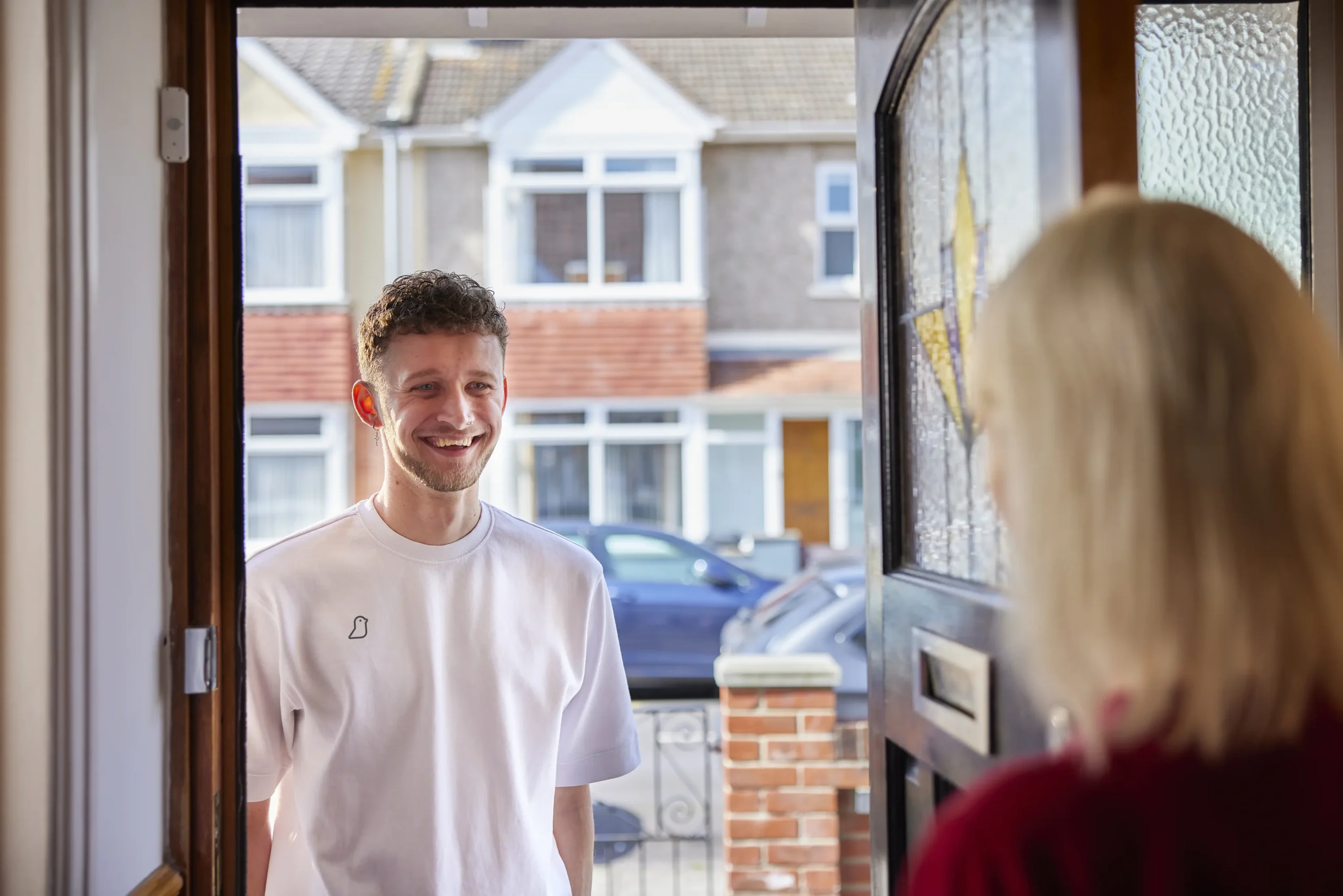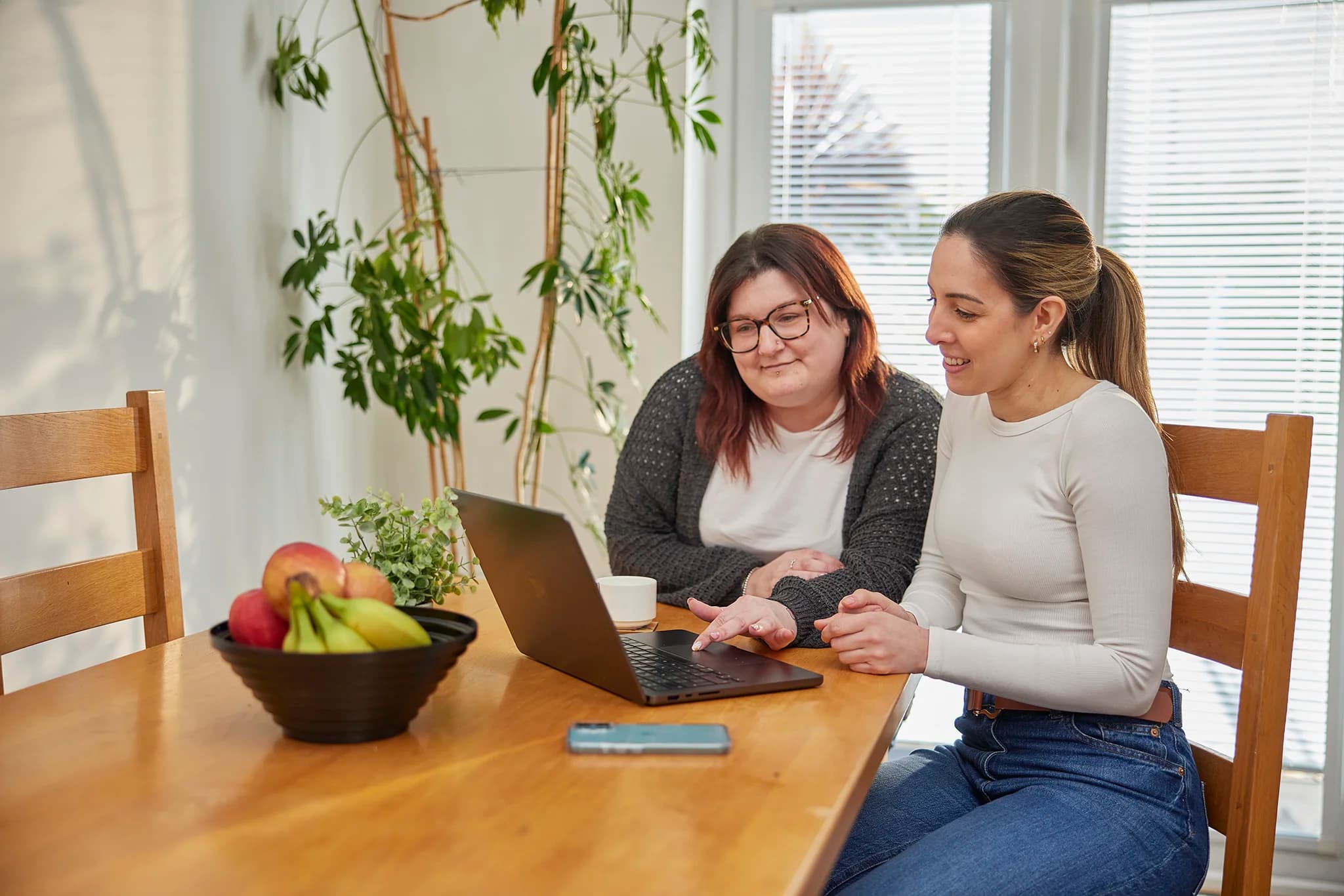You should plug in your hub within strong range of your home’s Wi-Fi for the best connectivity.
Welcome to Canary Care support
It’s normal to have questions, and we’re here to help you find all the answers you need. From info about our packages and setting-up, to understanding how to use your sensors in the right way, every time – Canary Care can work for you.

Setting up your equipment
If your hub loses network connection – information from the sensors and visitor cards still gets stored. Once connection is back, you’ll get access to this stored information in the Canary Care portal, so you won’t miss a thing. If the connection is lost for a significant period – you’ll get an email or SMS to let you know it’s offline.
Your hub also has back-up battery power, so if you lose mains power, it’ll keep running and keep sending information to the Canary Care portal. When fully charged, the backup battery will last about 3 hours. You’ll get an email or SMS to let you know if the power has been off for more than an hour.
If you want to move your hub to a new location, or to a new home – no problem. Simply turn off the power, unplug the hub and plug into the power supply at the new location. It may take a few minutes to re-establish connection.
Don’t forget – you might need to also move your sensors so they’re in range of your new hub location.
If you’re worried about tampering, you can place door sensors on the ceiling above the doors, facing down and they will still work. This means they are out of reach, and you still get the peace of mind you need.
If a confused person unplugs the main hub – no problem, it will run from a backup battery, and you’ll get an alert if power is out for more than an hour.
Understanding your sensors
You can use your sensors in different ways to suit your needs:
- Placing them at chest height on a wall in a room means they’ll work as a motion sensor and will monitor light levels and temperature. This means you can keep an eye on activity in a particular room, and if that room is warm enough for example.
- Using the sensors with door magnets on a door will monitor when a door is opened and closed. This means you can check if someone has left the house, or if visitors are coming in or out.
We’d suggest putting door sensors on front and back doors, and motion sensors in main living spaces, like the kitchen, bathroom, or bedroom.
You can place sensors on fridges, cupboards, windows, and drawers too – essentially anywhere you want to check movement. This means you can monitor and make sure a vulnerable person is eating properly, taking their medicine, opening windows during hot days, and anything in-between.
We offer various packages depending on the size of the home, and the needs of the patient. It all depends on where you want to be tracking movement and how many rooms or doors you’d like to monitor.
A 6-sensor package is ideal for a smaller home where you just need to monitor basic activity – like when someone leaves the house, but having more sensors means you can monitor more specific activity – like if the fridge is being opened, or windows kept closed. You’ll also get more detailed data with more than 1 sensor per room.
To move your sensor, hold it and gently pull the tab on the contact strip. It’s important to do this slowly – it’ll stretch to about 6 times its normal length before it comes away completely. Then simply remove the battery and set-up in your new chosen location.
Sensor batteries should last at least 12 months. Don’t worry, when it starts to run low and needs to be replaced, we’ll send you an email or a text message in plenty of time.
Canary Care sensors use CR123A Lithium-ion batteries. Batteries are included with all Canary Care system packages, but we recommend that you purchase replacement high-power batteries if you need them.
Using our Canary Care Portal
Once your sensors are set up, you’re ready to log in and start using the portal. You can log in online at www.canarycare.co.uk/mycanary or download the app from your app store.
Trouble logging in? No problem – call our team on 01865 408366 or email help@canarycare.co.uk – we’re here to help!
We’d recommend you name each sensor by room or location, so they’re easy to keep track of.
In the Portal, head to ‘Sensors’ and click on the cog icon. Enter the name you’d like, and specify whether it’s a door, or a motion sensor. For example: ‘Kitchen, door’ or ‘Bedroom, motion’.
Then it’s easy to set up alerts – so if you know someone hasn’t gone in the kitchen for a few hours, you can check in to see if they’ve eaten anything that day.
You’ll need to add your mobile number to set up SMS alerts. Head to the Account section , then click ‘Update Personal Details’ – you can enter your number here.
You can set certain rules to give you alerts at various times – either for the whole system, or individual sensors. Just head to ‘Rules’ to get started. With the drop-down menus, you can set up rules for movement, temperature, visitor cards and doors.
For example, you could set an alert to let you know if your someone is up at night – this could be an alert if the bedroom door sensor activates between 9pm and 6am.
Or you might need to know if someone is warm enough, so you can get alerted if the temperature drops below a certain level. There are so many ways alerts can help with specific needs, you can contact our team for personalised advice and help.
Just head to Account, then click ‘Update Personal Details’ – you can edit your information here any time.
Yes, you can use our Calling Circle to share Canary Care data to all named people, so they receive alerts and emails. Having alerts set up to go to multiple people means it’s not all down to you to help if something goes wrong.
Yes, as long as you have internet connection you can access the Canary Care Portal app, or online hub, from anywhere in the world. Remember – receiving SMS alerts may be charged in line with your phone provider and contract.
Your privacy and data
There are no microphones or cameras with our systems, we’re big believers in care with dignity. You can also be assured that all data communicated between the sensors, hub and portal is securely encrypted.
Yes, at Canary Care we take privacy very seriously. All the data collected is encrypted and transferred to our UK-based servers using secure internet protocols, so data is only accessible to authorised people.
If you need to, we can arrange for your data to be deleted from our servers. Please contact support@canarycare.co.uk for more information.
No, you can grant access to whoever you’d like using our Calling Card system – beyond that, only Canary Care has access to the data. We need access to the data only in order to operate, support and improve the service we offer to our customers, but we never share your data with third parties.

Still stuck?